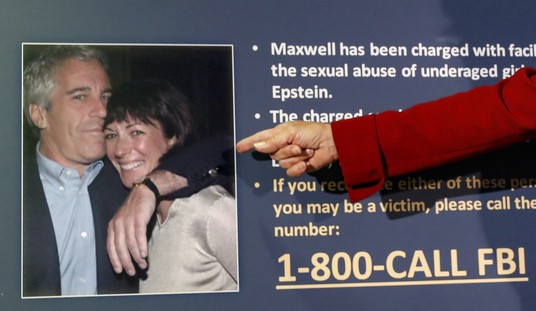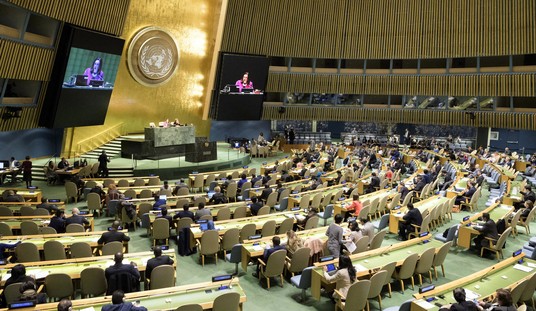Don’t worry, though. Everyone learned the lesson about excessive subprime lending and overleveraging, right? Right? Today’s Wall Street Journal report on record levels of credit-card and auto-loan debt sound like a stroll down Memory Lane — if Memory Lane has a bridge with a creaky structure (via Stephen Green at Instapundit):
U.S. credit-card balances are on track to hit $1 trillion this year, as banks aggressively push their plastic and consumers grow more comfortable carrying debt.
That sum would come close to the all-time peak of $1.02 trillion set in July 2008, just before the financial crisis intensified, and could signal an easing of frugal habits ingrained by the recession.
The boom has been driven by steady economic conditions and an improving job market that have made creditworthy consumers less reluctant to take on debt. In addition, lenders have signed up millions of subprime consumers who previously weren’t able to get credit.
Emphasis mine, because the emphasis has been theirs. In fact, subprime credit-card lending in 2015 jumped to its highest level since … wait for it ….
Because many creditworthy consumers are still cautious about spending, lenders are turning more aggressively to subprime borrowers. Lenders issued some 10.6 million general-purpose credit cards to subprime borrowers last year, up 25% from 2014 and the highest level since 2007, according to Equifax.
As the saying goes, history repeats itself — the first time as tragedy, the second time as farce. Auto loans also hit a record $1 trillion in the first quarter of the year, although it’s not clear how much of that relates to subprime lending. Auto loans are at least somewhat secured by the vehicle itself, but credit cards are almost always unsecured and have high interest rates to cover other losses. It’s those high interest rates that have incentivized banks to jump back heavily into the subprime markets, as traditional secured loans generate much less profit thanks to persistently low rates.
This time, though, some banks are at least requiring deposits to cover the spending limits on the cards. Why this would appeal to cardholders over simple debit cards is somewhat murky, though. That would be the rational way to “secure” a Visa or Mastercard, as they do not allow a cardholder to spend more than the account balance — plus it doesn’t result in interest charges. Consumers who need to rebuild credit might opt for these products, but it’s a safe bet that this doesn’t represent the bulk of subprime credit-card lending.
At the moment, WSJ’s Annamaria Andriotis and Robin Sidel report, defaults are at a historic low. That might be because lenders avoided heavy subprime lending until recently, but it also shows that lenders might feel more comfortable taking more risks after having years to rebuild their economic positions. So far, it doesn’t appear that the efforts to expand subprime lending extend any further into the mortgage markets than usual, even if the Obama administration occasionally raises the issue. But consumers are already carrying a ton of household debt already, as Slate noted last week, almost as much as before the Great Recession and the near-collapse of the financial sector:
Interestingly, non-mortgage debt never really declined all that much, and now has driven the growth of household debt back over $12 trillion. As long as banks can sustain the losses on their own, then this may not be a huge problem, especially if the debt doesn’t infect the securities markets as it did before the crash. It’s still a worrisome trend, especially as the economy remains mired at stagnation levels, with hints of worse to come.









Join the conversation as a VIP Member